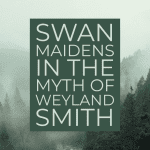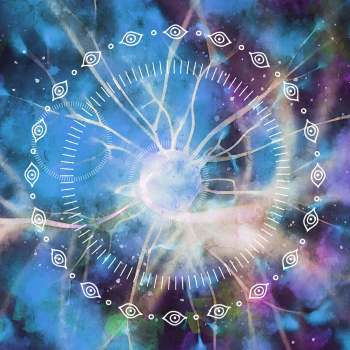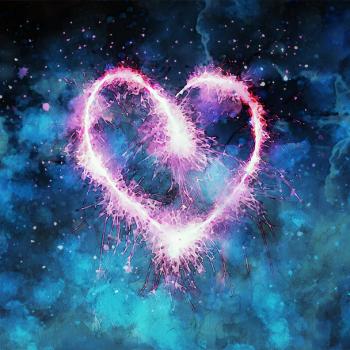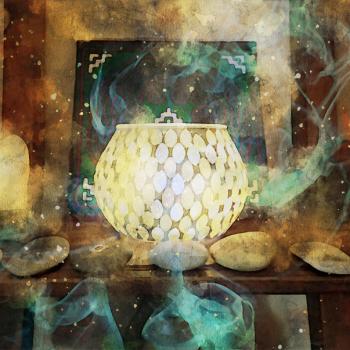Working with one particular group of spirits over a period of years has been an incredibly fulfilling and life changing experience. I have found these winged women in many places and in many cultures. I have sat with them in my mind and felt honored to be in such company. In a world where Raven and Wren are often honored, where the Morrigan calls many and the beating of wings is so rarely combined with the color white, I felt the need to share my own experience. I have wondered if it is possible that people who are drawn to experience this sort of spirit mostly do so in a Christian context. Swan maidens are so outwardly angelic looking, they focus on creativity and inspiration. There seems to have a celestial connection as well, so it would be easy to blend into a Christian mythos.
Looking up to see white winged figures watching over you is the subject of poems, prayers, and imagery throughout many churches. It’s completely traditional. Pagans are rebels. They have to be. There are very few second-generation pagans. Who wants to be a rebel giving offerings to foofy angel women? Turns out, I do. Even though I love the warrior women that have found a home in the Morrigan’s battle camps I hope there are others who are drawn to star light illuminating broad white wings.
I have found swan maidens in a great many cultures, and have researched them actively in Greek, Celtic, Norse, Baltic, Japanese, Finnish, and Northern Eurasian circumpolar cultures. In the coming weeks and months I will be continuing to share that research, as well as my own experience with this particular spirit grouping. I have been hesitant to spend a lot of time on this topic on my blog, since it seems to me to be a very specific and particular obsession, but the spirits themselves have pushed the issue, and I do try to listen to them.

My research shows that there is a cluster of symbolism that seem to go together surrounding swans, including love, healing, rivers, sun, stars, transformation, connection and separation from the spiritworld, seduction, and marriage versus independence. In my research I have also seen how swans seem to stand in some sort of connection to, or opposition of the carrion birds such as ravens.
It is my belief that the swan goddesses were connected to what we might think as the more peaceful occupations, and that ravens and hawks were connected to the more warlike ones. Because so much of what we have of pagan religion was recorded fairly late in the timeline of paganism, we see many more records and stories that focus on the warlike deities such as the Morrigan and Odin, who both have raven connections. My theory is that the deities that were more about peacetime activities were just not the focus of late game paganism. The Teutonic Knights wiped out the Baltic Prussians in a pagan genocide. Europe became almost completely Christian, sometimes through conversion, but often through war and death. When one religion fights another for its very existence, the focus will naturally change.
So why swans?
When the swan maidens started calling to me, I thought the whole thing was nutters. I wasn’t interested in ballerinas or smooshy love. As I’ve worked with these motifs and myths what I’ve discovered is that the swan maidens are much more than that, and speak to a powerful femininity that is focused on personal sovereignty that can still mesh with marriage, a healing power that is rooted in connection to the land and the waters that flow through it, and a powerful anger that comes from protecting that land and protecting your loved ones.
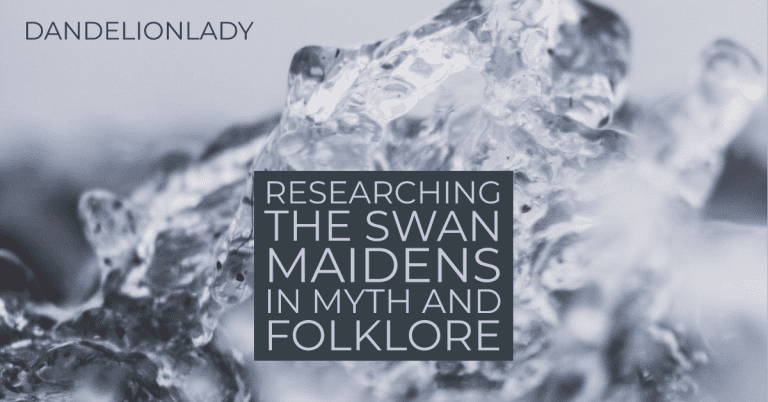
The research on swan maidens is fraught with sexism. Many scholars in the latter parts of the nineteenth century and the early twentieth century described them as “demonic” and “seductresses” when describing and analyzing the classic folklore motif in Germanic lore. According to the Aarne–Thompson folklore classification systems the Swan Maiden motif is categorized as motif number 402, “The Animal Bride” though other classification systems give them their own category. I have researched both the folkoric aspects as well as the mythic aspects. One of my most shocking discoveries was what appears to be a connection in Greek mythology between swans, bird women, and my other odd obsession, the goddess of night. It all appears to be linked, when one looks in a cross cultural analysis. Swans are connected to the land, which is expressed as the Vanic gods in the Norse pantheon, where Freyr and Freyja are the children of Jord, and the grandchildren of Nott, the Norse goddess of night. Again we see the connection between the land, the night, and bird women.
More modern scholars analysis is incredibly important to understanding the myths. Barbara Fass Leavy who writes In Search of the Swan Maiden talks about the role of being a woman in both the telling of the tales and the collecting of the tales. She quotes Ingrid Bengis about the condition of being a woman in a patriarchal culture. A man’s understanding of being a woman is conditional upon being in conversation with a woman. But a woman, that understanding is always with her, every day, in a myriad of different ways. She can never forget. I find that to be quite true. Leavy notes that research has indicated that while male storytellers protagonists are almost exclusively men, female story tellers have both male and female protagonists. To be female is to be forgettable by men and to be required to include them in your own storytelling.
And so we have, in the swan maiden motif and myth, a microcosm of the challenges of womanhood within a patriarchal system. In my spiritwork I fly with the flocks of swans. In my ritual work I have seen how young women have been empowered by their example. I believe that while work with the Morrigan is incredibly important, it is not the only work to be done. I am called by my spirits to reach out and speak to the people who are connected to the land, to those who are not meant to warriors in the core of their being, but instead are only warriors when called upon to defend.
I never wanted to be a warrior. I am a healer, a farmer, a mother, a writer and an artist. I walk the way of inspiration, just as Sarasvati does. But war calls to us all in many ways, and I hope to inspire others who are like me to stand up and speak their inspiration. It is a powerful process to find one’s voice and I think a great many women need to learn to find their own. It is my dream that by sharing my research and experience I might meet others doing this work. People who have discovered that swans are scary beasts that might just break your arm if you threaten them, and that tutus aren’t the only symbolic connection to their graceful forms.


